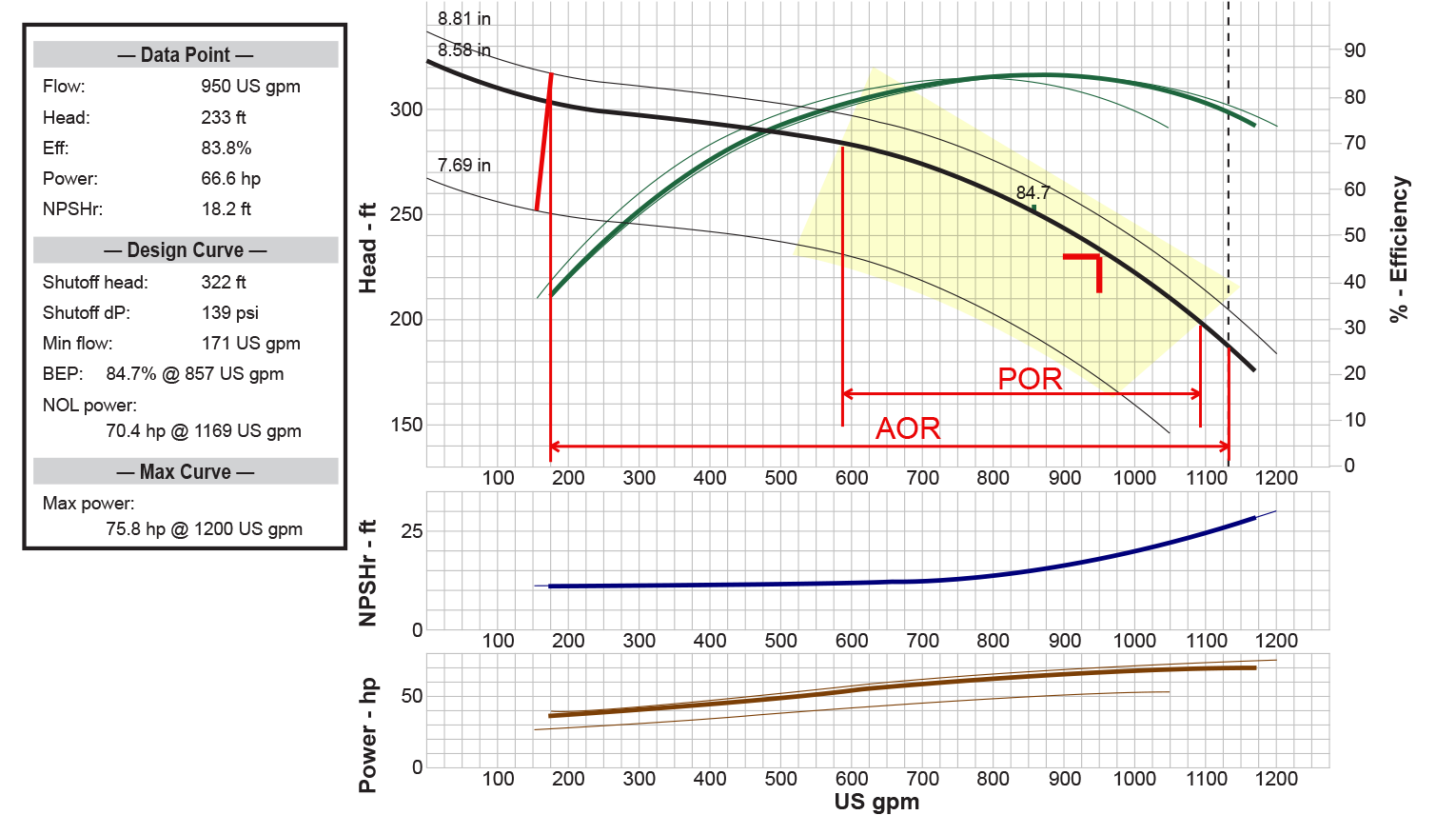Understanding Preferred and Allowable Operating Regions
July 12, 2017
The location that the pump operates on the pump curve can play a critical role in the design and evaluation of the pump. Hydraulic Institute (HI) standards recommend or define values based on which region the pump is operating in. The Rotodynamic (Centrifugal and Vertical) Pumps – Guideline for Allowable Operating Region (ANSI/HI 9.6.3-2012) defines two operating regions, the Preferred (POR) and the Allowable (AOR). The POR is a narrow region within the broader AOR where the pump exhibits the best efficiency and reliability. Operating beyond the AOR is not recommended.
The POR on National Pump Company curves is denoted by the selection window (yellow shaded region) in PumpFLO. Pump models which come up as options when using the Design Point Search are always within the POR. When operating within the POR, the pump requires a smaller NPSH margin (reference ANSI/HI 9.6.1-2012) and will have the lowest vibration readings. This region is typically between 70 and 120% of the best efficiency point (BEP).
The broader AOR on National Pump Company curves extends from the minimum flow to halfway between the end of the POR and end of the curve. Pump models must be manually selected for operation in this region. Along with requiring greater NPSH margin, the allowable vibration limits specified by HI are increased by 30% (reference ANSI/HI 9.6.4-2009a).
56696_NationalPump_PumpFlowGraph_0717

Note: The dashed line showing the upper range of the AOR can be added to curves upon request.
